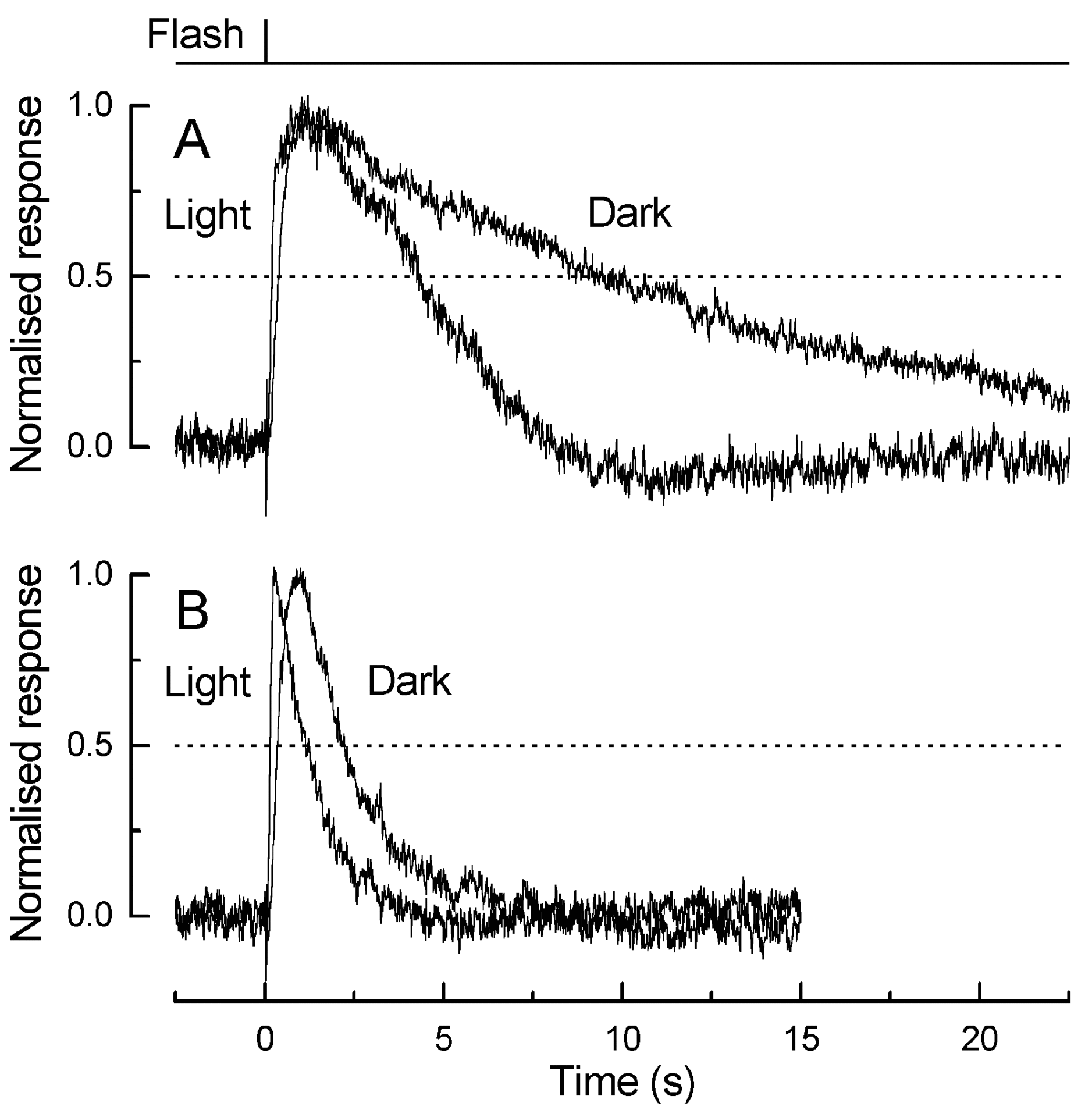During light adaptation Ca2+ acts on a step early in phototransduction that takes place with a time constant of ~0.5 s (Matthews, 1997). In rods that have been bleached and regenerated with 11-cis-9-demethylretinal, which forms a photopigment with a prolonged photoactivated lifetime (Corson et al. 1994), the time course of this Ca2+-dependent step is greatly prolonged so that it dominates the recovery of the bright flash response (Matthews et al. 2001). In order to investigate the shaping of the dim flash response, we have studied dim flash response kinetics during light adaptation in rods containing the 9-demethylretinal pigment.
Aquatic tiger salamanders were killed by stunning, decapitation and pithing. Isolated rods were exposed to intense 500 nm light calculated to bleach >99 % of the photopigment, and regenerated by exposure to phospholipid vesicles containing 9-demethlyretinal. In a bleached rod regenerated with 9-demethlyretinal, the response in darkness to a 440 nm dim flash (Fig. 1A, Dark), which preferentially excites the analogue photopigment, was substantially prolonged in comparison with the response to a 650 nm flash (Fig. 1B, Dark), which preferentially excites remaining native pigment. Steady near-saturating 610 nm light had a much more profound effect on the recovery kinetics of the response to the 440 nm flash (Fig. 1A, Light) than that to the 650 nm flash (Fig. 1B, Light). This steady light accelerated the time for 50 % recovery of the response to the 440 nm flash from 8.3 ± 0.5 to 3.5 ± 0.3 s (means ± S.E.M., 9 cells), and the response to the 650 nm flash from 2.1 ± 0.1 to 0.89 ± 0.09 s. The mean decrease in response duration at 440 nm (4.9 ± 0.6 s) was significantly larger than that at 650 nm (1.2 ± 0.1 s) (Student’s unpaired t test, t = 6.35; better than 0.1 % level). This observation suggests that the recovery phase of the response to a dim 440 nm flash is dominated by the greatly slowed Ca2+-sensitive quenching of the analogue photopigment, thereby enhancing the modulation of response recovery as [Ca2+]i falls during background light.
This work was supported by the Wellcome Trust, EY01157 & EY04939.

